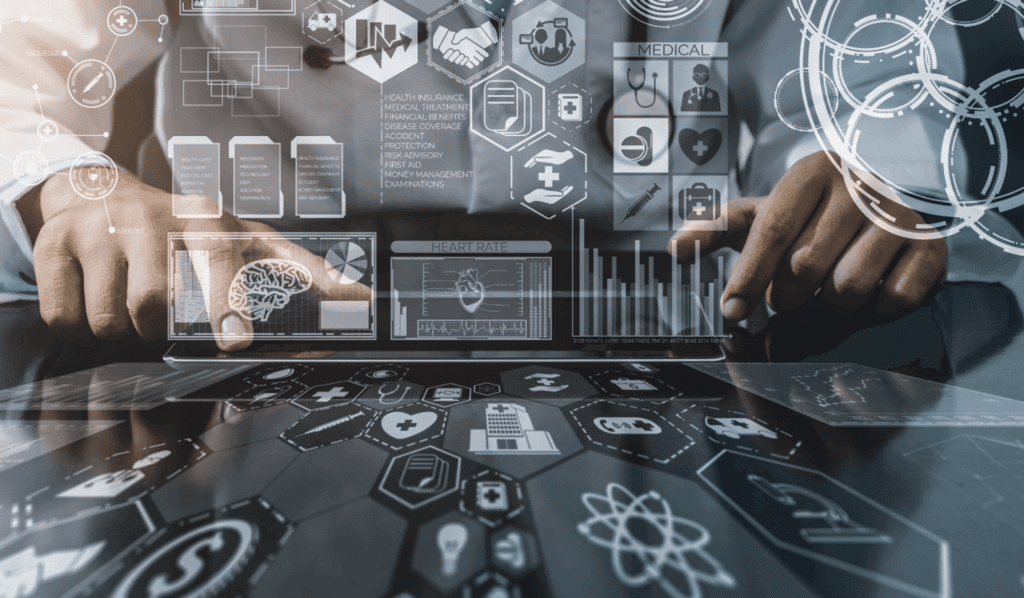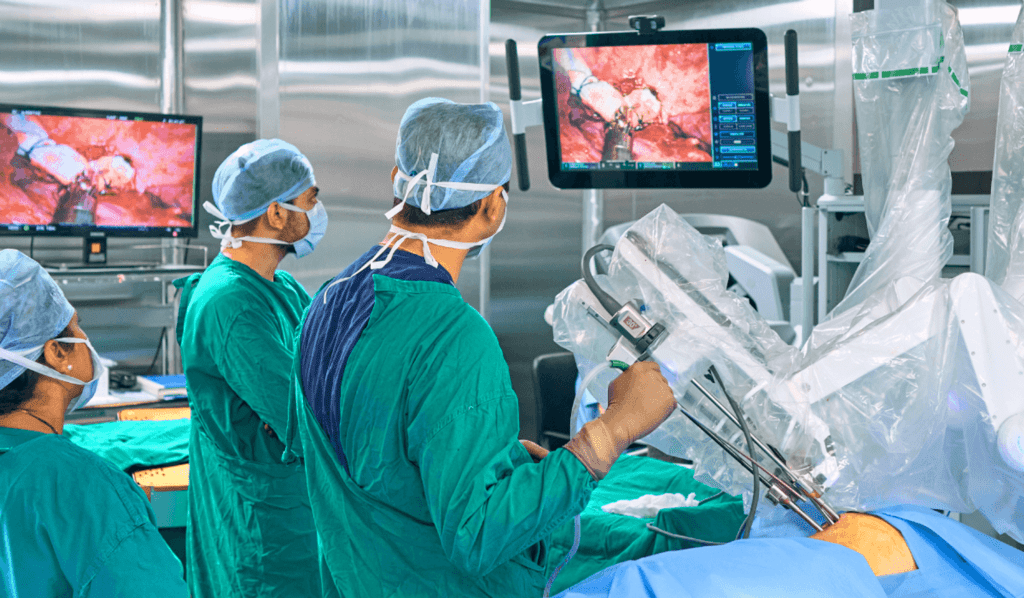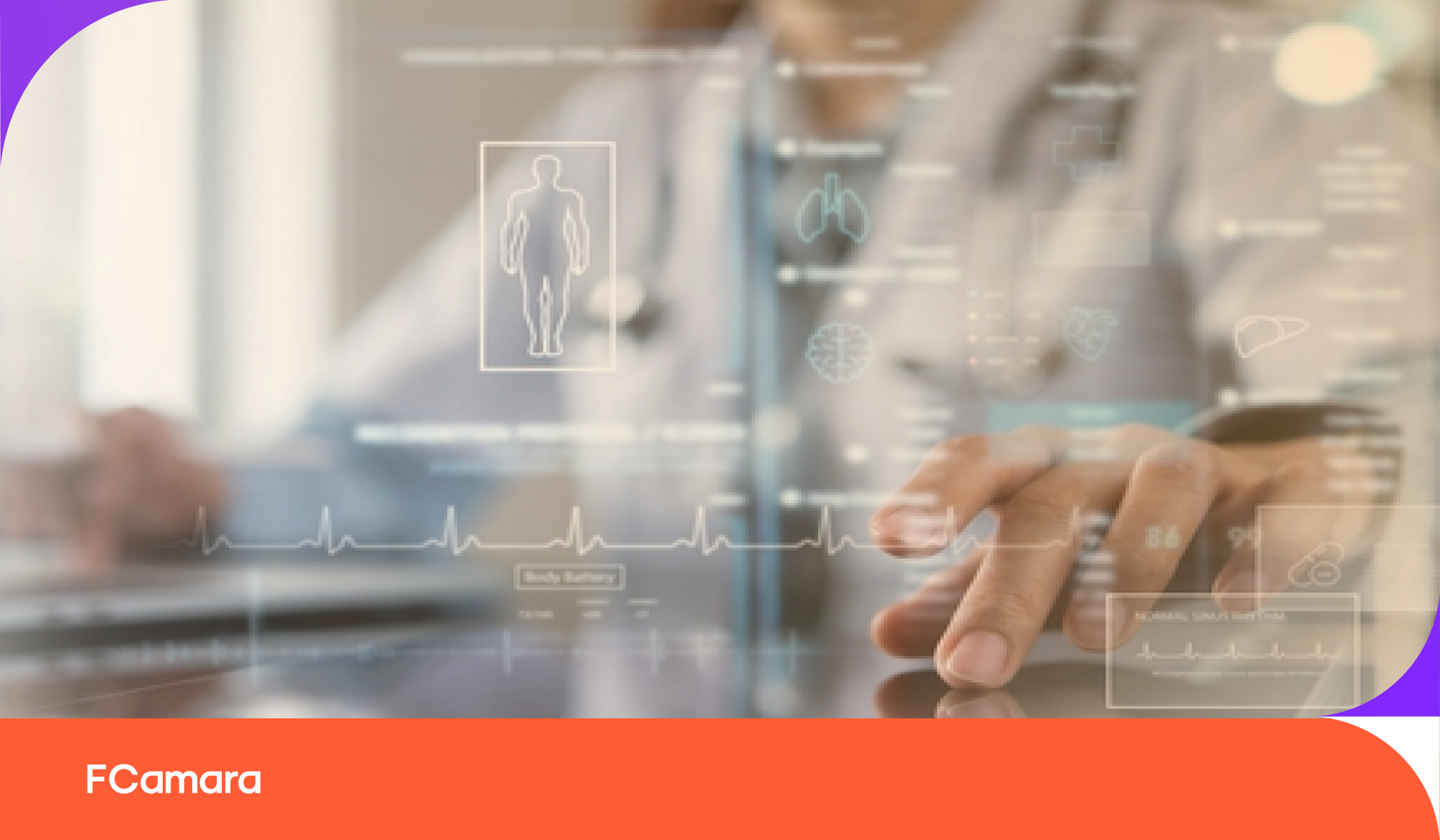IoMT: How We Can Help Your Business Thrive
What are we talking about?
- IoMT, an extension of the Internet of Things (IoT) applied to healthcare, enhances health management by enabling real-time patient monitoring, increasing diagnostic accuracy, and improving treatment efficacy;
- Benefits of IoMT include greater efficiency, improved patient experience, and more;
- An IoMT solution developed by FCamara prevented cardiac arrest in a patient.
The Internet of Medical Things (IoMT) is driving significant transformations in the healthcare sector. With the rise of Health 4.0, a concept representing the integration of advanced digital technologies in health management, several disruptive technologies are making a difference. Big data, artificial intelligence, machine learning, and cloud computing are modernising medical processes and improving treatment adherence.
In this context, IoMT stands out as one of the fastest-growing technologies in the market, enhancing continuous data collection. These data are vital for developing predictive models that improve diagnostic accuracy and personalise treatments, which are fundamental in the new era of medicine.
According to a McKinsey analysis, the global economic potential of IoT, including IoMT, could reach between $5.5 and $12.6 trillion by 2030, with healthcare representing about 10 to 14% of that value. This financial impact underscores the importance and rapid growth of IoMT, highlighting its role in transforming the healthcare sector. With its application, we are keeping pace with technological evolution and redefining patient care standards in an interconnected world.

Where Are the Most Competitive Companies Already Utilising IoMT?
Below, we explore some of the primary applications of IoMT, demonstrating where it is already making a difference in healthcare.
Medical Devices
Firstly, connected devices such as cardiac monitors and insulin pumps are clear examples of IoMT. These devices aid in continuous patient health monitoring and alert doctors to changes requiring immediate attention.
Telemonitoring
Telemonitoring enables doctors to track patients’ health remotely. This is particularly valuable for chronic patients or those in remote areas. IoMT facilitates the communication of health information between patient and doctor, optimising follow-ups.
Robotic Surgery
IoMT is also revolutionising the operating room through robotic surgery. This technology allows for more precise and less invasive operations, reducing recovery time and improving surgical outcomes. Since 2016, nearly a quarter of a million (238,000) robot-assisted procedures have been done. In 2022, 49,000 procedures were performed with robots, compared to 11,000 in 2016. Last year, a London hospital became the first to complete 10,000 robotic surgeries. Guy’s and St Thomas’ NHS Trust first installed the innovative Da Vinci robot in 2004 and now hosts the most extensive robotic surgery programme in the country.
Wearables
Wearable devices, such as smartwatches and fitness monitors, are essential components of IoMT. They track various aspects of the user’s health, such as heart rate and physical activity, providing accurate information for personal health monitoring.
Population Health
IoMT plays a crucial role in population health by facilitating large-scale data collection and analysis. Healthcare professionals can identify disease patterns and trends, aiding in prevention.
IoMT also supports public health programmes through environmental and behavioural monitoring. For example, IoMT devices and sensors can track air quality in urban areas, generating data that can be correlated with respiratory disease incidences. This type of analysis is essential for public health authorities to develop targeted policies to combat specific health issues, promoting a healthier environment for all.

Benefits of IoMT for Healthcare Institutions
Now that you have a better understanding of IoMT continue reading to discover the benefits IoMT can offer to the healthcare ecosystem.
1. Increased Efficiency and Agility
Implementing IoMT allows healthcare institutions to optimise their processes, resulting in greater efficiency and agility.
With connected devices and automated systems, repetitive tasks can be performed quickly and with fewer errors. This optimisation frees time for healthcare professionals to focus on direct patient care and accelerates response times in critical situations.
2. Improved Patient Experience
Implementing IoMT allows healthcare institutions to optimise their processes, resulting in greater efficiency and agility.
With connected devices and automated systems, repetitive tasks can be performed quickly and with fewer errors.
This optimisation frees time for healthcare professionals to focus on direct patient care and accelerates response times in critical situations.
3. Enhanced Security
IoMT uses encryption, authentication, access controls, and other advanced security technologies to protect data from unauthorised access.
These measures ensure the security and integrity of information while reducing the risk of sensitive data breaches.
4. Waste Reduction
IoMT helps reduce waste in healthcare institutions. Institutions can avoid overstocking and waste by using detailed data to manage medical supply inventories.
This is economically advantageous and promotes more sustainable practices within the sector.
5. More Accurate Diagnostics
Finally, IoMT enhances diagnostic capabilities. Advanced devices and algorithms can quickly analyse large volumes of health data, identifying patterns that may not be evident to doctors. This enables professionals to provide more accurate diagnoses and implement appropriate treatments more swiftly, which can be crucial for patient outcomes.
FCamara’s IoMT Solution Prevented Cardiac Arrest in a Patient
Currently, some companies, such as FCamara, are utilising IoMT to help save lives. A driver of future business, FCamara’s health vertical has been observing this market trend for some time.
According to Eric Thuler, a sleep medicine specialist and researcher at the University of Pennsylvania, the technology helps identify patterns in vital signs that signal patient health deterioration. “Thus, when a problem is identified, the healthcare professional can intervene proactively, seeking to reverse the situation preventively,” he stated.
To provide partner companies in the segment with a leading role in futuristic movements, the business unit developed an initiative that uses IoMT technology and is recognised for its results. With a healthcare company, FCamara monitored 27 patients with chronic diseases through smartwatches. These devices were connected to an application that sent the collected information to a secure cloud based on the General Data Protection Regulation.
This made it possible for the intelligence to notify if any lives were at risk. According to Marcos Moraes, director of FCamara’s health vertical, “the solution’s goal was to offer the doctor the ability to monitor degradation, creating the opportunity to intervene proactively.”
In a short time, it was possible to identify the first degradation in a patient: a variation in her heart rate deviation. Following the notification, the responsible doctor could request the patient’s presence at the unit and act preventively. However, if the degradation had not been identified, this case would not have had the same outcome, proving that preventive algorithms can be practical.
Conclusion
In summary, IoMT has become an essential technology, allowing sector professionals to perform more accurate diagnoses and ensure the best clinical outcomes for patients.
At FCamara, we are committed to innovation in the sector. One of our initiatives is Healthub, an intelligent telemonitoring platform integrating IoMT and wearables.
Moreover, we use advanced statistical algorithms with artificial intelligence to predict health risks and promote healthy behavioural changes.
Are you interested in implementing IoMT in your business and transforming healthcare delivery? Contact us today to discover how our solutions can benefit your organisation.


Comments (0)